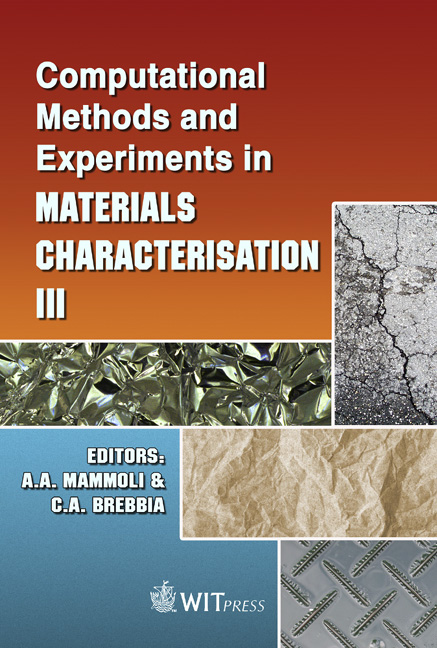Three-dimensional Crystallographic Characterization And Mechanical Modeling Of A Commercial Stainless Steel
Price
Free (open access)
Transaction
Volume
57
Pages
10
Published
2007
Size
1,410 kb
Paper DOI
10.2495/MC070121
Copyright
WIT Press
Author(s)
A. C. Lewis, D. J. Rowenhorst, G. Spanos & A. B. Geltmacher
Abstract
The microstructure, crystallography, and mechanical response of a commercial super-austenitic stainless steel, AL-6XN, has been investigated. Three-dimensional (3D) reconstructions, generated by combining serial sectioning techniques with Electron Backscatter Diffraction (EBSD), are used for characterization of the microstructure and crystallography of the material, and as input for 3D Image-Based Finite Element Models (IB-FEM). Using these techniques, the distributions of crystallographic 3D grain boundary normals have been quantified, and are shown to provide critical new information not previously attainable from the commonly used morphological descriptors. Image-based finite element simulations, with the 3D microstructure and crystallography as input, were performed to determine the critical microstructural features at which failure is likely to initiate. Keywords: 3D microstructures, 3D analysis, austenitic stainless steel, crystallography, finite element modeling. 1 Introduction Three-dimensional experimental materials characterization and analyses are becoming increasingly prevalent, as recent advances have made both the acquisition of 3D datasets and the analysis of these data faster and more readily available (i.e. [1-4]). As material data evolves from classic two-dimensional micrographs and cross-sectional images to complete three-dimensional datasets, the modeling and simulation techniques used to analyze the properties and predict the performance of these materials must also adapt to accommodate these
Keywords
3D microstructures, 3D analysis, austenitic stainless steel, crystallography, finite element modeling.





